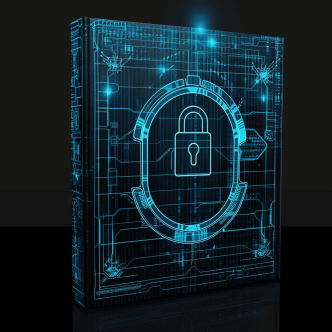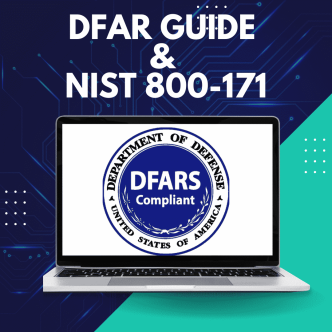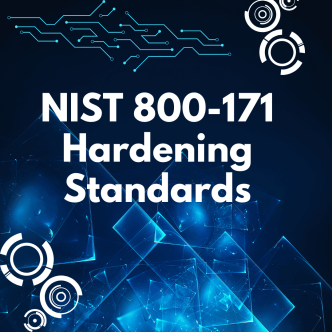The National Institute of Standards and Technology (NIST) is a US government agency that develops standards and guidelines for cybersecurity and technology. The purpose of these guidelines is to protect sensitive information, especially for those companies working with the government.
The NIST 800-171 guidelines for “Protecting Controlled Unclassified Information in Nonfederal Systems and Organizations," is a framework that ensures system security and the compliance necessary to work with a federal government body.
The most recent guidelines, NIST 800-171 Rev 3, last updated on May 10, 2024 includes security requirements and guidelines for implementing effective security controls and hardening measures.
By adhering to the NIST hardening standards outlined in SP 800-171 Rev. 3 guidelines, organizations can establish a strong security foundation and protect sensitive information from unauthorized access, disclosure, or loss.
Brief Overview of SP 800-171 Requirement Guidelines
The NIST 800-171 Rev. 3 (NIST SP 800-171r3) abstract states 'The protection of Controlled Unclassified Information (CUI) is of paramount importance to federal agencies and can directly impact the ability of the Federal Government to successfully conduct its essential missions and functions.
This publication provides federal agencies with recommended security requirements for protecting the confidentiality of CUI when the information is resident in nonfederal systems and organizations. The requirements apply to components of nonfederal systems that process, store, or transmit CUI or that provide protection for such components. The security requirements are intended for use by federal agencies in contractual vehicles or other agreements established between those agencies and nonfederal organizations. This publication can be used in conjunction with its companion publication, NIST Special Publication 800-171A, which provides a comprehensive set of procedures to assess the security requirements.'
Exploring the 17 families of NIST security requirements
The table below highlights the key areas of cybersecurity that organizations must manage in order to properly protect sensitive information. Source controls are the specific actions organizations should implement to meet the guidelines in each category, providing practical steps to secure systems and data.
| Category | Description | Source Controls |
| Access Control (AC) | Focuses on account management for system, account types, and applications. | AC-3 ACCESS ENFORCEMENT
AC-17 REMOTE ACCESS |
| Awareness and Training (AT) | Provides security literacy training to system users. Organizations determine the content based on specific requirements, authorized access, and work environments. | AT-2 LITERACY TRAINING AND AWARENESS |
| Audit and Accountability (AU) | Involves maintaining records of user actions in the environment to identify unauthorized access and ensure accountability. | AU-2 EVENT LOGGING |
| Configuration Management (CM) | Requests organizations to establish and maintain baseline configurations and track changes over time, including maintaining an inventory of hardware and software assets. | CM-2 BASELINE CONFIGURATION |
| Identification and Authentication (IA) | Addresses processes and mechanisms for uniquely identifying and authenticating users for system access. | IA-2 IDENTIFICATION AND AUTHENTICATION
IA-11 RE-AUTHENTICATION |
| Incident Response (IR) | Focuses on establishing effective incident response capabilities, including detection, reporting, analysis, containment, and recovery procedures. | IR-4 INCIDENT HANDLING
IR-8 INCIDENT RESPONSE PLAN |
| Maintenance (MA) | Encompasses ongoing care and support of information systems, including system updates, vulnerability management, and configuration changes. | MA-3 MAINTENANCE TOOLS (MA-3, MA-3(1), MA-3(2), MA-3(3)) |
| Media Protection (MP) | Emphasizes safeguarding physical and digital media containing Controlled Unclassified Information (CUI) through access control, marking, storage, transportation, and proper disposal. | MP-4 MEDIA STORAGE |
| Personnel Security (PS) | Addresses personnel screening, training, and supervision to mitigate the risk of insider threats and unauthorized disclosures. | PS-3 PERSONNEL SCREENING |
| Physical Protection (PE) | Involves protecting physical assets by developing, approving, and maintaining a list of individuals with authorized access, applicable to employees and visitors. | PE-2 PHYSICAL ACCESS AUTHORIZATIONS |
| Risk Assessment (RA) | Involves identifying, analyzing, evaluating, and managing risks to organizational assets and individuals from the operation of an information system, prioritizing risks to the confidentiality, integrity, and availability of CUI. | RA-3 RISK ASSESSMENT (RA-3, RA-3(1), SR-6) |
| Security Assessment and Monitoring (CA) | Focuses on evaluating the effectiveness and desired outcomes of security controls and overall security posture through assessments, documentation, and vulnerability remediation. | CA-2 CONTROL ASSESSMENTS |
| System and Communications Protection (SC) | Aims to protect information systems and communications through boundary protection, encryption, and network monitoring. | SC-7 BOUNDARY PROTECTION |
| System and Information Integrity (SI) | Outlines security requirements for ensuring the confidentiality, integrity, and availability of information systems and data, including identifying, reporting, and correcting system flaws in a timely manner. | SI-2 FLAW REMEDIATION |
| Planning (PL) | Discusses the security requirements for ensuring that information systems are developed and maintained in a secure manner, including developing and maintaining a system security plan. | AC-1, AT-1, AU-1, CA-1, CM-1, IA-1, IR-1, MA-1, MP-1, PE-1, PL-1, PS-1, RA-1, SA-1, SC-1, SI-1, SR-1 |
| System and Services Acquisition (SA) | Involves the process of acquiring, developing, and maintaining information systems and services securely, focusing on minimizing risks, verifying the integrity of acquired systems, and ensuring their secure operation throughout their lifecycle. | SA-8 SECURITY AND PRIVACY ENGINEERING PRINCIPLES |
| Supply Chain Risk Management (SR) | Ensures that the entire supply chain, including external entities, follow appropriate security measures to protect CUI, by developing a plan for managing supply chain risks associated with the system's lifecycle, including identifying and addressing weaknesses or deficiencies in the supply chain. | SR-2 SUPPLY CHAIN RISK MANAGEMENT PLAN |
NIST hardening standards
NIST hardening standards refer to the guidelines and best practices for specific configuration settings and controls to mitigate vulnerabilities. For instance, NIST SP 800-53 recommends implementing strong access controls, such as two-factor authentication and role-based access, to restrict unauthorized access. It also mandates the use of encryption protocols like Transport Layer Security TLS for securing network communications.
NIST SP 800-171 specifies requirements for secure configuration management, including disabling unnecessary services, applying patches promptly, and configuring systems to enforce strong password policies. These standards also emphasize the importance of auditing and monitoring, requiring organizations to implement centralized logging, intrusion detection systems, and security event monitoring to detect and respond to potential security incidents.
CalCom Hardening Suite (CHS) automates NIST hardening standards and is a valuable tool that simplifies and streamlines the process of implementing and maintaining NIST security framework. A centralized platform assesses system compliance with NIST standards, identify gaps, and automates the implementation of recommended security configurations. The software automates the learning and evaluation of systems, identifies vulnerabilities, and suggests appropriate remediation actions to align with NIST standards. By leveraging such software, organizations can effectively streamline the hardening process, reduce human errors, and maintain a strong security posture in accordance with NIST hardening standards.




